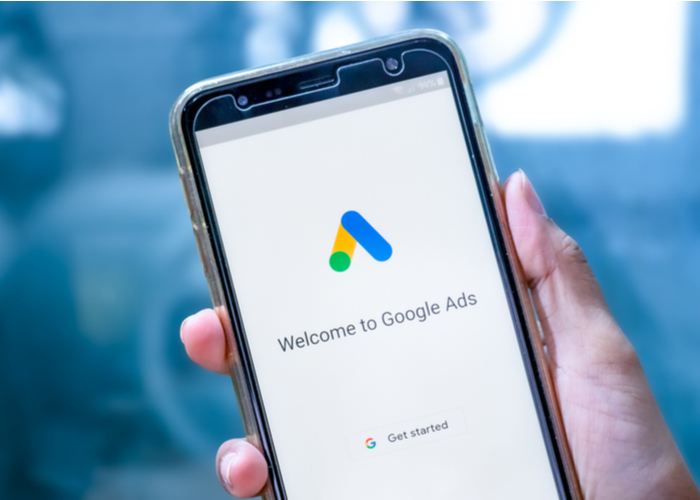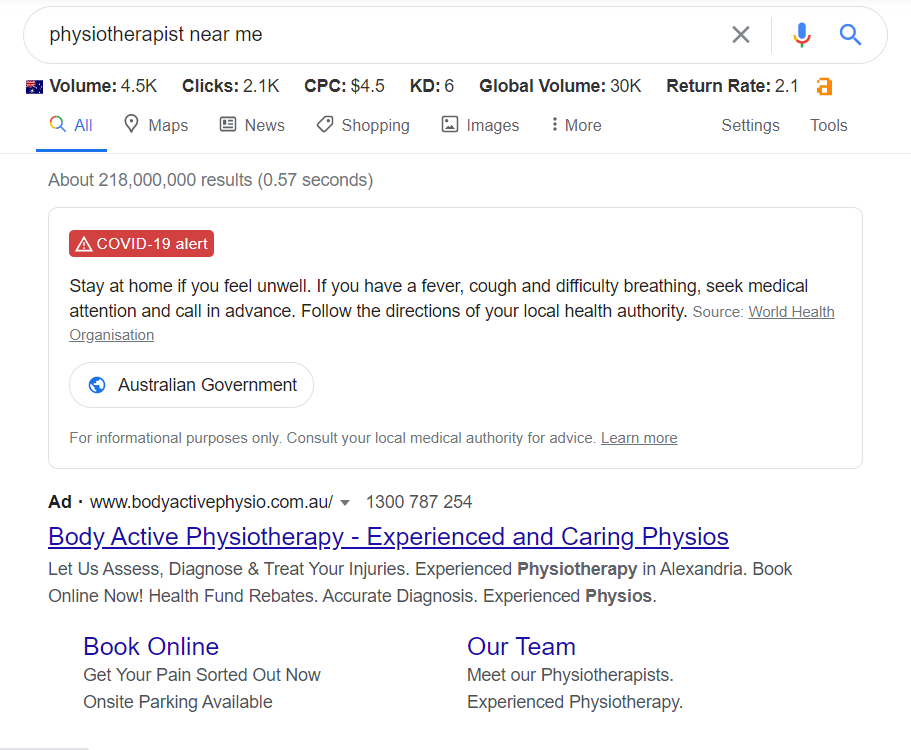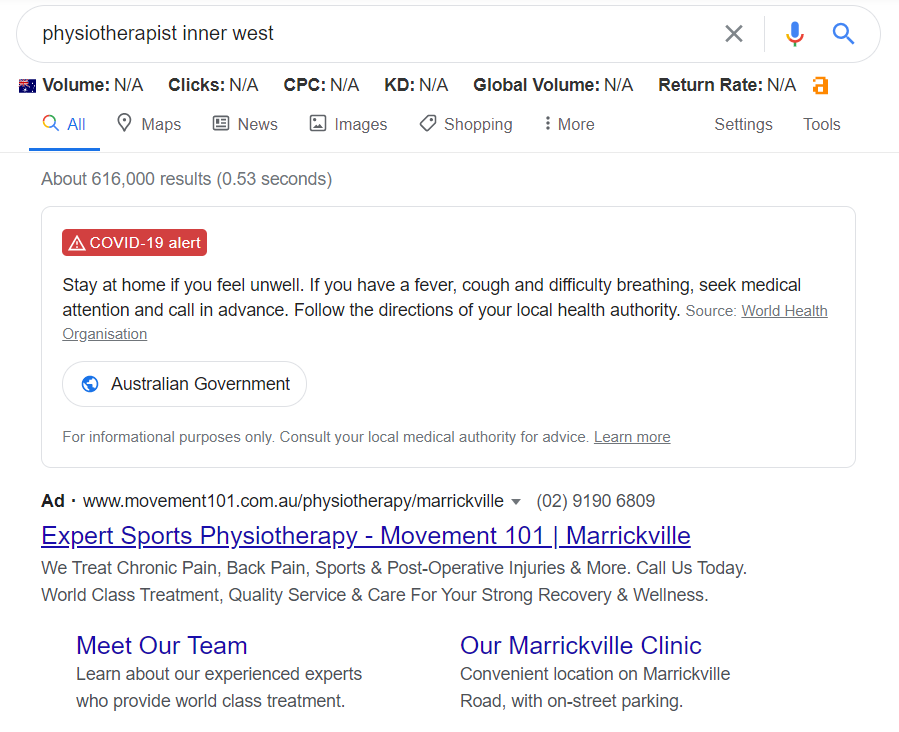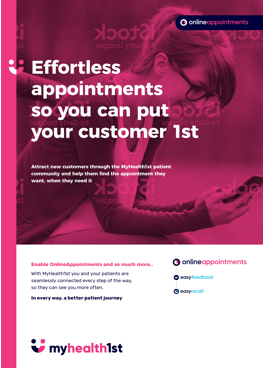
At the moment this document was first created, according to Internet Live Stats there were over 85,670 Google searches a second. That extrapolates to over 7.4 billion searches a day, worldwide. When you look at numbers like that, it’s no wonder that Google Ads are so appealing to businesses. Even snapping up a fraction of a fraction of that search volume can massively extend the reach of any business, giving them access to a consumer base they may not have had before.
Being able to reach a huge number of people is great, but being able to reach the right people is what matters most when it comes to advertising - there’s no point in screaming your message into the void and hoping for a response. Being able to simply and effectively target your chosen audience is one of the major selling points for Google Ads, but as with everything, there are caveats.
What is Google Ads?

Google Ads (previously known as Google AdWords) is a pay per click (PPC) advertising product developed by Google. You’ve definitely seen them before if you’ve ever used Google. They’re those little ads you’ll see at the top of search results. You might not have clicked on one yourself, however a good number of people do and can drive a great deal of traffic towards a business if correctly targeted.
The ads appear in conjunction with a search term that is entered into Google. Say, for instance, someone is searching for a “physiotherapist near me” . Google searches through its stable of advertisements to determine which will be displayed in conjunction with the search term. A number of factors are examined when choosing which ads are shown, including the relevance of the keyword to the search, the quality of the landing page the ad directs to and the maximum amount of money the business is willing to spend per click.

Once Google has decided on which ads to serve with the search, the “winners” are shown above the search results. According to Ahrefs, the estimated cost per click for “physiotherapist near me” is around $4.50, meaning that the advertisers shown will be charged around $4.50 for every click through to their site.
Although $4.50 was the price in the Sydney Inner West at the time of writing, it is worth noting that this price will vary minute by minute to a certain extent, and vary wildly across the country. A regional physiotherapist, for example, will most likely have a much smaller bid. These fluctuations in price aren’t arbitrary - Google Ads operate on an auction system, with multiple advertisers bidding on keywords, so the less local competition a keyword has the less expensive that keyword will be.
Although cost per click is the metric by which Google Ads are charged, cost per conversion is the metric you should most consider when starting a Google Ads campaign. If you’re simply looking for traffic for your site, cost per click is fine, as every click equals another visit, but if you’re looking for someone to come in as a patient, that’s a conversion.
How much you’re willing to pay per conversion should inform how much money you’re willing to budget for a Google Ad.
Taking an average of the highest and lowest price points for physiotherapy appointments, we’ll work with $135 as a sample figure for an initial consultation. How much money are you willing to pay to make $135? Paying around $67 per appointment can double your investment so that may sound like a reasonable number for your practice. That doesn’t mean you’ll pay $67 per click though.
A good conversion rate for Google ads sits at around 4% or 5%, but the average is closer to 2%. Taking the average conversion rate, that means that for every fifty clicks on the ad there will be one new patient. This means you should be budgeting about $1.35 per click
Pros of Google Ads
Instant Gratification With a little experience, finding keywords to target and creating Google Ads can be a quick and fairly easy process. Once you have set up an ad the results can come in very fast, especially if you’re looking at driving traffic through to your site. While SEO and organic search traffic has more long term viability for traffic, it can take months to see any noticeable increase in traffic, with an ad you can see the effect in days, if not hours.
First Page Exposure
Everyone wants their website to appear on the first page of Google. As far as SEO goes, first page exposure is the holy grail. The vast majority of click through traffic comes through the first page of search results and ads are guaranteed to appear above the search results on the first page - so long as your ad has been chosen, of course.
Easily Measured Results
Google Analytics gives advertisers access to a large number of metrics giving them the ability to easily track the performance of an ad so they can be boosted or cancelled/changed if needed.
Data collected includes: the number of clicks an ad generates and stats on who clicked, the amount of traffic that an ad or campaign drives to your site or the number of leads generated by an ad or campaign, the keywords you’re targeting that generate the highest number of clicks and leads, the average cost for each lead generated, the average CPC (cost per click) and the rate of interaction with your ad.
Control and Experimentation
Google Ads offer a cost effective way to experiment and test new ideas and keywords. For only a small outlay (say $100) you can run a test ad to see the speed and efficacy of driving clicks and conversions, giving you an excellent indicator of how you can better target your marketing budget.
Limited Space to Work
The format of a Google Ad is very strict and there is no leeway. Ads are made up of three 30 character headlines, two 90 character description lines and a display URL that is customisable.
For maximum effect, in this limited space your ad needs to include a headline that will appeal to your target market and grab attention, relevant keywords, the benefits of the service you are offering and a call to action prompting people to click the enclosed link. As you can imagine, trying to fit all this information into such a small space can be rather difficult.
Pay Per Click
When you pay per click, you can run through your available budget very quickly, making your ad burn bright and fade away quickly.
Competitive Keywords are Expensive
The more competitive the industry, the more expensive keywords can become. The example we used before, “physiotherapist near me” is a fairly pricey keyword at $4.50 per click. Using the example above of a 2% conversion rate, at $4.50 per click a $135 appointment would cost $225. Losing $90 per new patient is a great way to quickly go out of business, unless you can guarantee patient loyalty and multiple follow up appointments.

While the number of searches for “physiotherapist inner west” is far fewer than “physiotherapist near me”, the price for each click is negligible. It should be noted that just because the CPC is showing up as N/A in Ahrefs, it doesn’t mean the keyword is free, just that there is not a great deal of competition.
Of course, highly sought after and trafficked keywords are more likely to offer more click throughs and conversions. Finding a balance between cost and reward can be difficult.
You Need to Target Well
The trick is researching keywords to find ones that have a high enough search volume to generate clicks but aren’t overused. If you target too broadly you may generate clicks but few conversions, making for an expensive but ultimately fruitless ad. If you target too narrowly the conversion rate may be high, but the reach of the ad will be so small that the expense may not be worth it.
Your Landing Page Must Be Excellent
Not only do your ads have to be succinct but full of information and keywords, the landing page they direct to also has to be top notch for Google to choose your ad to run in the first place. It’s all well and good having an excellent ad, but if your website is sub-par then you will be penalised and the effectiveness of your ads will be reduced.
If you’re interested in Google Advertising but don’t have the experience, expertise or time to devote to creating and monitoring ads, never fear. MyHealth1st has added Managed Digital Marketing to its stable of products.
What is Google Display?
If you’ve ever seen banner ads or side ads, there’s a good chance that the advertisement was hosted on the Google Display Network, a collection of over three million sites and apps who have partnered with Google . The Websites in the network display the ads for a small cut of the revenue and Google delivers the ads based on demographic, behavioural and location targeting.
What this means is that in many cases people will be delivered different ads on the same website even if browsing at the same time due to their browsing and purchasing habits as well as other information that Google has been able to collect.
Building Brand Awareness
While it may not be particularly useful for small independent practices, Google Display is excellent for increasing brand awareness. The Average conversion rate of a Display ad is much lower than that of a Google Ad with an average click through rate of about 0.5% leading to around 0.7% conversions, but for a form of advertising that will target a number of people who have zero familiarity with your brand, this can still be an excellent rate.
In addition to this click through and conversion rate, keeping a brand alive in the minds of potential payments increases the chance of conversion at a later date.
Retargeting
Google Display ads are an excellent way of keeping your brand alive in the minds of people who have been to your website but haven’t yet converted to being a patient or client. If only 2% of clicks on a Google Ad convert, then that leaves 98% of the market untapped.
When someone visits your website, Display ads will then follow them to other websites thanks to a cookie, keeping the brand relevant to people who have not yet converted, increasing the chance that your practice will be at the top of their mind when foot care is needed.
Cost Per Click (CPC)
The overall average cost per click for Display ads is around 30% less than the average CPC of Google Ads.
Targeting
Google Display allows for more nuanced targeting than Google Search Ads. Whereas Google Ads are limited to keyword targeting, Google Display allows advertisers to target by demographics, such as age, sex, and income, behaviours such as browsing or buying habits, and location.
Click Through Rate
The click through rate for Google Display is low, making it a better avenue for increasing brand awareness and retargeting than actual conversions. This fact can potentially make it a hard sell when trying to convince management (or those who control advertising budgets) of its value.
Low Quality Traffic
If you’re using automatic placement for the ads then you run the risk of generating a good deal of low quality traffic that will cost money but not generate leads or conversions. This problem can be overcome by manually excluding sites that are low quality, but this can be a time consuming process.
Difficulty and Setup Cost
The initial setup of an ad is more difficult than a Google Ad, and the initial setup can be more expensive, especially if you are paying for images and creative for the campaign.
